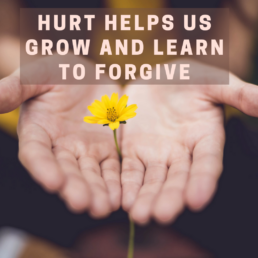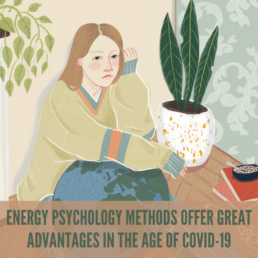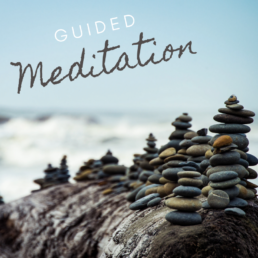Make Small Choices That Yield Big Results
 Americans are always in a hurry. We rush to work and rush to get the job done. We then rush home, and rush to get dinner on the table, kids to their activities, homework done, work some more. We rush to get to bed and hope to fall asleep really fast because the morning will be here before you know it, alarms dragging us out of bed to do it all over again.
Americans are always in a hurry. We rush to work and rush to get the job done. We then rush home, and rush to get dinner on the table, kids to their activities, homework done, work some more. We rush to get to bed and hope to fall asleep really fast because the morning will be here before you know it, alarms dragging us out of bed to do it all over again.
No wonder we love weekends.
But what are we losing in our fast-paced modern times? Americans are stressed – indeed, almost a quarter of respondents to an American Psychological Associate “Stress in America Survey” reported extreme stress; we are famously unhealthy, with chronic health conditions on the rise: fifty percent of US adults are living with some kind of chronic disease, and 1 in 3 of us is obese. And we aren’t particularly happy: one in ten Americans is living with depression, almost a third of us will experience anxiety in our lifetime, and up to 90% of all doctor visits are related to stress.
When we slow down, we create space for more happiness and health in our lives. When we rush around from obligation to obligation, where is the joy? …and what is the point?
In order to take back our lives and create a better quality of life, we can make some small choices that will yield big results:
- Set a bedtime and make it sacred. That bedtime should be a little more than eight hours before the alarm will go off the next morning. When we give our bodies a chance to rest and get a good nights’ sleep, we feel different. Research links sleep deprivation with everything from depression to weight gain. Sleeping is one of the most important things we can do for our health, and one of the things we really undervalue in our culture. For many of us who struggle with insomnia, one of the best treatments is to set and keep regular sleep and wake times.
- Decide what you can let go of. If your day is crammed with after-school activities for the kids, which ones are really worth it? A stressed-out kid who is shuttled between gymnastics, dance, and softball isn’t necessarily living the ideal childhood. I remember sitting in the lawn as a kid, watching insects and eating the buds of yellow clover flowers. I can still taste them. I’ll bet my kids don’t know what those flowers taste like; they spent their youth going to practice. It is a shame.
- If you are a slave to your housework, think about what you can live without and try to build inefficiencies for the things that matter. A professional organizer can help with that. I remember seeing on the Oprah show years ago a woman who was driving her family crazy because she was such a cleaning freak. After an intervention, she and her family decided not to sweep the floor every night. One less thing to do, one less thing to argue about. In my own home, I decided to trade ecology for the convenience of disposable cleaning wipes; I figured I wasn’t going to solve the waste disposal crisis anyway, and it makes cleaning easier. What are the things you can do to simplify the tasks you have to keep? Which are the tasks you can let go?
- Take a walk at lunchtime. Even five or ten minutes away from your desk, outside in the real air, is like pushing the re-set button on the day. Take a friend, and don’t talk about work unless it is to laugh about it. In my 20’s, I used to relish lunchtime walks, which were such a reprieve from an unfulfilling job. I thought back then that those walks were moments I’d cherish for the rest of my life. Twenty-five years later, I can say I was right.
- Smell the roses. Really. Walk by flowers in bloom and try to catch their fragrance in the air. It reconnects you to the moment and to nature. And makes you happy.
- Greet your family when you come home. Make it a ritual. Smile, make eye contact, have a hug. It will connect you to them and allow you to pause and transition to the next thing. And then you will be more mindful about what you are doing.
- Bless your food. It is amazing and wonderful that we have such a bounty of colorful, life-giving foods available to us. Taking the moment to honor it before eating slows the pace, increases mindfulness, enhances enjoyment. And you’ll eat less, and better.
- Take a bath. Let the kids fold their laundry or run the vacuum. Your emails can wait. That endless TV will still be there when you finish. A good soak does a world of wonder to wash away the stress of a busy day.
- Take a nap. If you are really tired, take a nap. Just make it a short one or it may disrupt your sleep cycle. Set your alarm for 15 minutes and close your eyes. You will be amazed at how much better you feel.
- Don’t buy into the busy-ness. We are caught up in the grand illusion that every little task is uber-important. Imagine you are 90 years old. What would your old, wise self say to the present-day you? My guess is that it would be something like, “Slow down, enjoy your life. It is fleeting.”
Be Present With What Is
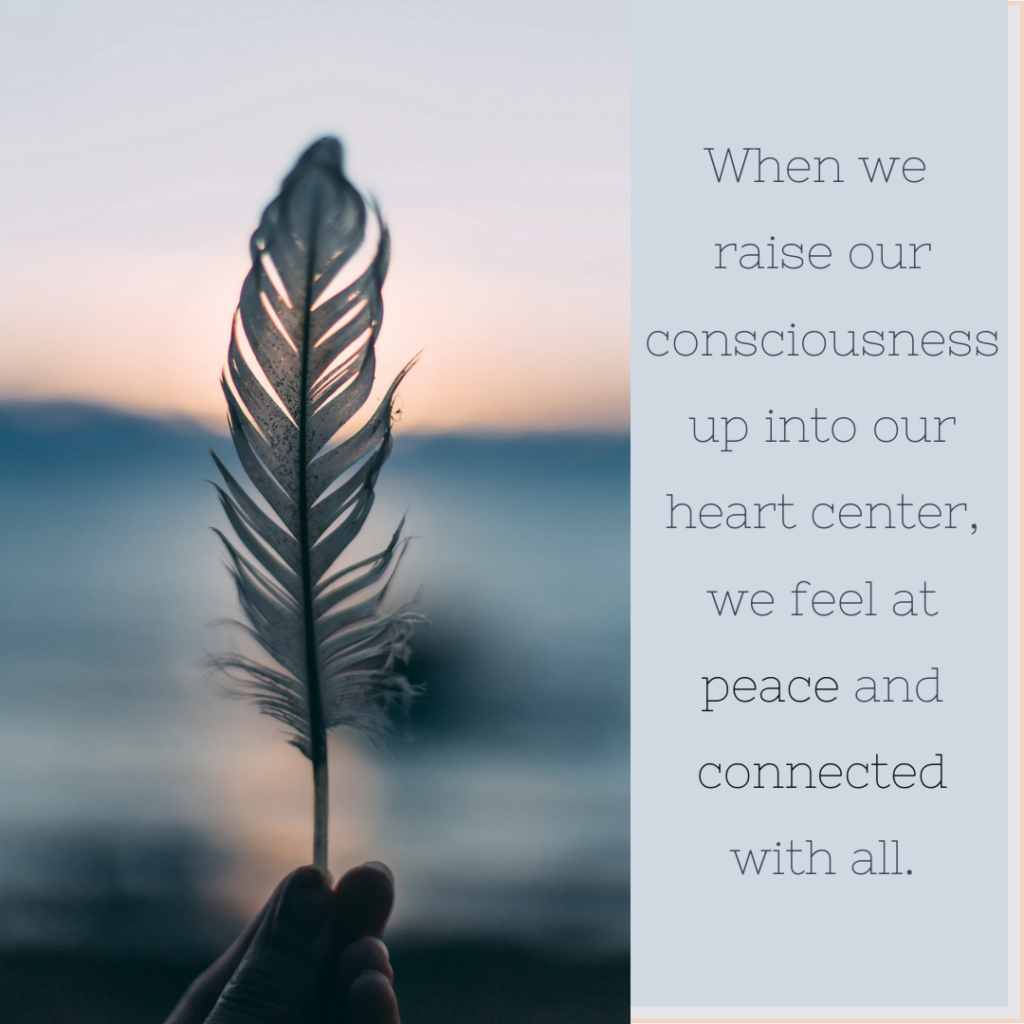 I recently had a client who had a bad case of “the shoulds.” She was stuck in a counterproductive mindset, feeling like “I should do this” and “I should be that”. There are so many things that she was telling herself she “should” be and do that she couldn't appreciate where she actually was in her life, let alone have clarity about the direction she was going. And she certainly couldn’t have any fun with it.
I recently had a client who had a bad case of “the shoulds.” She was stuck in a counterproductive mindset, feeling like “I should do this” and “I should be that”. There are so many things that she was telling herself she “should” be and do that she couldn't appreciate where she actually was in her life, let alone have clarity about the direction she was going. And she certainly couldn’t have any fun with it.
This is so common. When I look back on my own life I realize that there were many times when I had a bad case of the “shoulds” myself. When we get stuck thinking about what we should be doing and how things should be going and what kind of person we should be, instead of being present with what is, we are disconnected from our authentic self. We are stuck in our ego-level of consciousness. This drains us, clouds our perceptions, and makes it nearly impossible to build an effective and happy life.
Sometimes I think that if I could share only one thing with my clients, it would be to let go of the “shoulds” and get on with the business of life unfolding. Forget about what others expect. Forget other people’s agendas, and even your own perceived agenda, with all of the tension and disconnect that brings. Get out of your ego and into your heart. When we raise our consciousness up into our heart center, we feel at peace and connected with all; we are able to trust in the order of things and trust ourselves.
If you are suffering from the “shoulds”, stop! Right now, take a few deep breaths and soften into your heart center. As you begin to connect to your heart, ask your Higher Self to release you from the expectations you place on yourself and the expectations others place on you. With intention, with practice, you will be able to start living an authentic and joy-filled life of purpose—present, confident, and graceful with what IS. Such a better place to be from which to weave a life.
Memory Reconsolidation: I Remember But I Don’t Feel Upset
 One of the best things about being an energy psychology practitioner is seeing that look of wonder in our clients’ eyes when their traumatic memories are no longer traumatic.
One of the best things about being an energy psychology practitioner is seeing that look of wonder in our clients’ eyes when their traumatic memories are no longer traumatic.
“I remember it, but I don’t feel upset about it,” they say.
It’s the kind of experience that makes this profession so rewarding.
I remember one instance in particular. A client was working on a childhood trauma. He was in tears ― lots of them ― before we even started working. When I asked him to rate his distress on a scale of 0-10, he said it was 100. He looked as if he were telling the truth.
We began working. If you practice one of the meridian-based forms of energy psychology (like Thought Field Therapy and Emotional Freedom Techniques), you know the drill. We tapped, and down the rating went: 10 to 6, 6 to 3, 3 to 0 or 1. At the end of the hour, and the end of the story, we arrived at a wide-eyed, “How-did-this-happen, I-remember-but-I-don’t-feel-upset, it’s-a-ZERO!!”
Memory reconsolidation
How did this happen? A part of the answer, at least, has to do with memory reconsolidation.
Neuroscientists used to think that once something was encoded into long –term memory, it was there for good. The emotions associated with a memory were permanent. Or so it seemed.
In the late 1990’s, researchers began studying memory reconsolidation. It turns out, thank goodness, that memories are changeable. When memories are activated ―when we remember― the memory becomes labile. This means that every time we access a memory, that memory can be changed, or reconsolidated. When a memory is reconsolidated, the uncomfortable emotions associated with it can be erased.
The concept of memory reconsolidation has been popularized by Bruce Ecker (see his 2015 article), with an emphasis on the role of disrupted expectations as key factor. Pairing an emotional memory with discrepant information is a key component of all therapy for anxiety, yet most anxiety therapies offer at best, “extinction”.
And extinction is really a misnomer. Like the salivation response of Pavlov’s dogs, after “extinction”, so too with extinction-oriented therapy: anxiety-provoking memories, and their flood of feelings, can come back unbidden at any time.
Memory reconsolidation is something different: an elimination of the anxiety associated with a previously disturbing memory. Discrepant emotional information alone cannot explain the memory reconsolidation process.
The mechanisms and conditions of memory reconsolidation are complex and subtle, as Kindt explains, but the startling and rapid effects of acupoint tapping suggest that energy psychology may contribute a crucial component.
Tapping on acupoints can bring about a shift in physiology, so that activation of the memory no longer evokes the previous pattern of bodily feedback. As neuroscientist Antonio Damasio (2000) argues, emotions are the brain’s interpretation of the body’s state; if the body’s state is calm then the emotion has gone. The memory will reconsolidate with this changed information. You can read more of Damasio’s research here, or check out his book here.
Memory reconsolidation and energy psychology
Memory reconsolidation offers a powerful tool to help overcome these issues and can facilitate transformational change. It is helpful to understand how it happens. Researchers have identified three key ingredients:
- Vividly remember
- Change the internal physiology
- Repeat
In his 2015 article, David Feinstein explained energy psychology tapping in terms of memory reconsolidation. His article is worth a read; the link is here.
Meridian tapping is soothing, rhythmic, and relaxing. Studies show that tapping on meridian points changes body chemistry and brain activity:
- A recent study using functional magnetic resonance imaging (fMRI) showed deactivation in limbic regions following tapping.
- A 2009 study, using electroencephalogram (EEG), demonstrated healthy changes in brainwave patterns after trauma treatment with energy psychology.
- A 2012 study showed energy psychology reduces levels of salivary cortisol.
When we do energy psychology tapping, we ask our clients to activate the memory. While they do that, they are tapping on meridian points. Our clients are simultaneously activating a troubling memory and calming their internal physiology.
Energy psychology is a good way to facilitate memory reconsolidation; memory reconsolidation is a good model to explain how energy psychology works. No matter how you look at it, energy psychology helps our clients heal old wounds and feel better about themselves.
Research Shows: EFT Helps People Lose Weight & Maintain Weight Loss
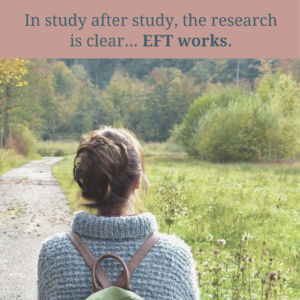 People who are overweight generally know what to do. Eat less, eat better, exercise more. Pretty simple, right? So why does it so often feel impossible? As with so many human problems, we know better, but we don’t seem to be able to do better.
People who are overweight generally know what to do. Eat less, eat better, exercise more. Pretty simple, right? So why does it so often feel impossible? As with so many human problems, we know better, but we don’t seem to be able to do better.
There are many factors that have very little to do with the knowledge that leads us to the sleeve of Girl Scout cookies. Or the bag of chips. The pint of Americone Dream. The drive-through window.
I’ve often observed that if we all could get our feelings to line up with what we know, hardly anyone would have a problem. It seems to me that we usually are pretty smart about things. Our problems, therefore, are not usually problems of information. They are problems of emotion, of energy, of habit.
They are problems for which the world of energy psychology offers solutions.
An overweight world
If you are dealing with weight issues, you are not alone. The rates of overweight and obesity around the world continue to climb. A New England Journal of Medicine report shows that the rate of obesity worldwide has doubled since 1980, affecting 5% of children and 12% of adults. In the US, researchers project that half of the adults will have obesity by 2030.
We at ACEP are body-positive. As mental health and health practitioners, we want our clients to feel good in whatever body they have. However, we must also acknowledge the health effects of obesity and overweight: increased risk of type 2 diabetes, kidney disease, hypertension, cardiovascular risk, certain cancers, other chronic conditions, as well as more depression and anxiety. Worldwide, overweight and obesity contributed to 4 million deaths in 2015.
By profession, by vocation, by calling, we are helpers. And so, we have been watching with great interest the work of Peta Stapleton and her colleagues, who have been using EFT to treat weight problems. We’re proud that she’s an ACEP member.
EFT and weight loss – the research
Stapleton is a world-renowned researcher who focuses on clinical applications of EFT “tapping” therapy. She has authored several books on ways to use EFT. She has conducted groundbreaking research on EFT for health, wellbeing, depression and anxiety, trauma, and weight issues, including food cravings. Stapleton’s latest work focused on internet delivery of an eight-week program of EFT for weight loss.
The internet, despite its flaws and limitations, is becoming a valuable tool for delivering health and mental health services. This study examined whether on-line delivery of EFT for psychological symptoms, food cravings, and consumption of craved foods, and weight management, would work.
It does.
Nearly 1,000 people from around the world signed up to participate in the eight-week study. After the usual attrition, more than 500 people ― mostly women, by a 9:1 ratio― joined the study. They were randomly placed into an EFT treatment group (314) and a no-treatment control group (228).
Participants in the study reported their height and weight, so researchers could calculate their BMI. They also reported their food cravings; power of food (how hard it was to resist when, say, they walked across a crowded pizza shop); restraint (a kind of “chronic dieting”, which is an indication of disordered eating); and their levels of depression, anxiety, and physiological symptoms (like headaches). People who got eight weeks of EFT delivered to their laptops and smart-phones lost weight. Their food cravings went down remarkably, they felt less controlled by food, and they exhibited less dietary restraint. They also had fewer aches and pains, as well as less depression and anxiety. Perhaps best of all, though only 20% of the participants kept tapping after the eight weeks, they all maintained their weight losses a year after the study concluded.
Making it real
EFT and other forms of energy psychology have gained popularity over the past couple of decades. More people in the West are open to an Eastern paradigm, which is one of the theoretical underpinnings of energy psychology.
Many of us remain skeptical but open to evidence. The research is clear in study after study: EFT works. In this case, it can help people lose weight and maintain their weight loss. It helps reduce food cravings and helps people feel less overpowered by food. It eases up on restricted eating and the boomerang that often accompanies it. It does all this while addressing depression, anxiety, and physiological symptoms.
If you, a client, or a loved one is interested in getting more information about using EFT for weight loss, go to the ACEP website to find a list of qualified practitioners.
Hurt Helps Us Grow and Learn to Forgive
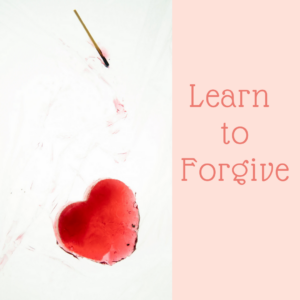 If you are human, you’ve been there – it comes with the territory. We’ve all been hurt. The bad news is that it hurts. But there is good news—the hurt helps us grow. One way to grow from our hurt is to learn to forgive.
If you are human, you’ve been there – it comes with the territory. We’ve all been hurt. The bad news is that it hurts. But there is good news—the hurt helps us grow. One way to grow from our hurt is to learn to forgive.
Forgiveness does not mean that what happened was OK, that we are condoning the thing that hurt us, or that we are necessarily reconciling with the person who hurt us. Forgiveness is a positive choice. It is a way for us to move out of our past, take back our power, and become happier people. I have experienced the benefits myself and seen them in many clients as well. Once the choice to forgive is made, it becomes a process. The following five steps help us with the process:
- Recognize that forgiveness is empowering: When we forgive, we take our power back from the person who hurt us. We give away our power when we allow another person’s past hurtful action to continue to hurt us in the present.
How to do it: Take a few moments to center yourself and then imagine and feel what life will be like for you when you are released from this hurt. Imagination is the seed of creation, so just by daydreaming about it you begin to create a new reality.
- Invoke your Higher Self: Healing is never possible without involving the Higher Self, which is who we really are. We are spiritual beings having a human experience, right? To reconnect to who you really are, practice invoking your Higher Self and accelerate the process of healing.
How to do it: Invoke your Higher Self by simply asking, “Higher Self, help me to forgive” and believe that the result is guaranteed. Because it is! The more we ask, the more – and more quickly – we receive.
- Cut the cords: Anger and hurt create energy cords that drain and cloud our energy fields. When healing occurs, those cords are cut. They can be cut in a “bottom-up” or “top-down” process – either wait for healing and know the cords are dissolved, or actively cut them through intention and accelerate the healing process.
How to do it: Close your eyes, center yourself, and invoke your Higher Self. Feel light and love in your heart center. Then imagine the person who hurt you; surround both of you in a blue light. Then say, “I return your rightful energy to you, and I retrieve my own rightful energy to myself.” Pay attention to any feeling you experience—it can be slightly dizzying, so breathe and trust that your Higher Self is guiding the process.
- Practice mindfulness: In those moments when you are upset by the hurtful past, practice being present. In this moment, where are you? In this moment, what is actually happening? Though the emotions certainly are real the pain you feel is an echo of the past, and the hurtful act is not part of your present reality. Reconnect to the present moment to help release the grip of the past and those related emotions.
How to do it: You can connect to the moment by focusing on something tangible – like your breath or the feeling of your feet on the ground or the pen in your hand. You can create a grounding ritual such as touching your forefinger to your thumb to remind you that you are OK in this moment.
- Learn from the experience: It is a truism: Every single thing that happens to us happens for a reason. The corollary to this idea is therefore that we are not victims. Our negative experiences are here to teach us and to help us become more fully who we really are.
How to do it: When you are calm and centered, ask yourself “What was my role in this hurtful situation? What is my lesson? What have I gained from this experience?” The answers are there for you, and embracing them is a huge step in taking back your power.
Forgiveness is an empowering choice and one worth making. Having done it, you will feel lighter, clearer, and more like yourself.
Be happy. It feels better!
“Be happy. It feels better!”
This has to be my absolute favorite quote from the Dalai Lama. It certainly is so true—of course it feels better to be happy! But is it really that simple? If we are not committed to happiness, it can be fleeting and difficult to find. And even when we are making happiness a priority (which it really ought to be for a number of reasons), sometimes things go wrong and we get derailed. What’s a happiness-seeker to do?
it can be fleeting and difficult to find. And even when we are making happiness a priority (which it really ought to be for a number of reasons), sometimes things go wrong and we get derailed. What’s a happiness-seeker to do?
- Detach, detach, detach. It can be so much easier said than done, right? But we know that taking the long view is a key to maintaining inner peace. Our pain comes not from the event but our resistance to it. As my dad said to me a few years ago when I was upset, “these things have a way of working themselves out.” How often do we look back and, as the Garth Brooks song goes, “thank God for unanswered prayers?” We have all let go of important—really, really important—things. And as time goes by, we realize life moves on and we can indeed still be happy. When life gets you down, remember this.
- Put a smile on. Even a fake one. Seriously. A researcher in Japan did a study in which he put people’s faces into a smile or a frown using rubber bands and plastic bandages. Sure enough, the “smilers” became happier and the frowners got unhappier. Smile on!
- Regular exercise has been shown to boost not just our metabolism and strength, but our moods as well. Find a type of exercise you like and commit to it. Find a buddy to work out with, sign up for an exercise or yoga class, or set yourself an alarm to hit the pavement or the clothes rack –umm, treadmill. Just do it!
- Be friendly. Social engagement boosts happiness and is a great anti-depressant. We humans are communal creatures and do better in society yet modern culture often separates us from our pack. Get out there and mingle.
- You’ve heard it here before. Meditation boosts happiness and a whole host of physiological markers of happiness. Disconnecting from our busy thoughts and emotions and returning to our center, which is a wellspring of peace and happiness, takes practice. In fact, it is a practice. We need to be patient with ourselves and get to work with that practice.
These are my top five go-to ways to stay more peaceful and happy. I should point out, of course, that happiness doesn’t come from pleasure-seeking; it comes from things like authenticity, productivity, and service. When our work and relationships are satisfying and affirming, and our spiritual life is rich, happiness unfolds in wonderful ways.
What are your favorite ways to stay happy? I’d love to hear from you!
Energy Psychology in the Age of Covid-19: What does the research say?
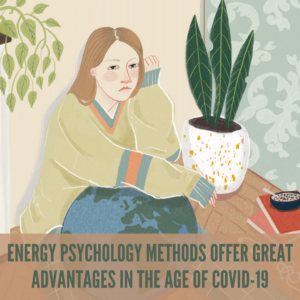 We are living in unprecedented times, as the world grapples with the covid19 pandemic. Many people are experiencing fear and worry about catching the virus and getting sick. Televisions across the world beam images of overcrowded hospitals and overburdened healthcare professionals. There is a real concern that necessary equipment is not, and will not be, available to protect and care for those in need. Meanwhile, many countries are addressing the pandemic by instituting lockdowns, keeping people in physical isolation. The impact on social and economic life is profound. The need for mental healthcare is growing.
We are living in unprecedented times, as the world grapples with the covid19 pandemic. Many people are experiencing fear and worry about catching the virus and getting sick. Televisions across the world beam images of overcrowded hospitals and overburdened healthcare professionals. There is a real concern that necessary equipment is not, and will not be, available to protect and care for those in need. Meanwhile, many countries are addressing the pandemic by instituting lockdowns, keeping people in physical isolation. The impact on social and economic life is profound. The need for mental healthcare is growing.
Energy psychology practitioners are uniquely positioned to help. Research demonstrates, time and again, that energy psychology methods can very effectively address anxiety, depression, and posttraumatic stress. Even more strikingly, recent research suggests that energy psychology can boost our immunity, and thus may help keep us from getting sick.
Online Delivery
The world is stressed, distressed ― and online. Energy psychology practitioners are used to helping clients manage anxiety and stress. Thanks to technology, we are able to deliver our services online. The question arises: Are online energy psychology sessions effective?
The first research study looking at this says yes, at least for Emotional Freedom Techniques (EFT). Peta Stapleton and her colleagues recently published a study showing that EFT delivered on-line was effective in helping clients lose weight and decrease food cravings. You can read more about that study here.
Energy Psychology for Anxiety
The increase in anxiety is making it plain to many people how valuable emotional health can be. There is a real need for efficient tools that address anxiety. Energy psychology has a great track record. But we don’t want to be partisan, so it’s a good idea to look again at the research.
In 2015, Morgan Cloud, MD, PhD, published a meta-analysis of studies examining the effectiveness of EFT for anxiety. People who received EFT treatment demonstrated a significant decrease in anxiety and outperformed the various control treatments. The effect size for EFT was 1.23, whereas the combined effect size for the control groups was .41. (To put this in context, 0.8 is a large effect size, which basically means that EFT had a very large impact on participants.)
Energy Psychology for Posttraumatic Stress
Many people may be experiencing posttraumatic stress during these times, particularly those on the front lines. Energy psychology, especially Thought Field Therapy (TFT) and Emotional Freedom Techniques (EFT), have a great clinical track record in treating posttraumatic stress.
There is a growing body of research to support energy psychology. Enough research, in fact, that in 2017, Sebastian and Nelms published a meta-analysis of studies of the effectiveness of EFT to treat PTSD. The analysis found that EFT was effective in relieving symptoms of PTSD in as little as four, and up to ten, sessions. The analysis included seven randomized controlled trials and found an eye-popping effect size of 2.96 among the studies that compared EFT to the waitlist or standard care.
Energy Psychology Methods May Boost Immunity
As the world reacts to the pandemic, almost everyone is interested in ways to boost our immune systems. Mind-body methods are gaining acceptance in the West, as more research shows that they are effective. People are increasingly aware, for example, that meditation can increase immune function. What does the research show about energy psychology?
Recent research suggests that EFT can have a positive effect on our immune system function. Several studies show that EFT reduces cortisol levels. One study showed that EFT catalyzes gene expression to boost immune function. A recent study measured physiological markers of more than 400 participants using EFT and found that they had significant declines in anxiety, depression, PTSD, pain, and cravings, as well as a boost in happiness. They also had increased salivary immunoglobin, a marker of immune function, and decreased cortisol, which is a stress hormone that suppresses the immune system.
You may have noticed that most of the research I mention here is focused on EFT and TFT. While there are many more methods that make up the family of energy psychology, most of the research to date has focused on these two methods.
You can access comprehensive bibliographies of the research on the ACEP website’s research section. It is updated at least once a year.
Bottom Line
Energy psychology methods offer some great advantages. Effective during sessions, they can also be used as self-help tools. This means that our clients can use these tools themselves between sessions, which is empowering. Energy psychology methods also offer fast results, and the results are durable. Energy psychology methods are flexible in delivery. They can be delivered one-to-one, in groups, in workshops, and online. They are safe and have no side effects. They are cost-effective. Best of all, they are highly effective. They are becoming more and more popular all the time ― with good reason!
Guided Meditation
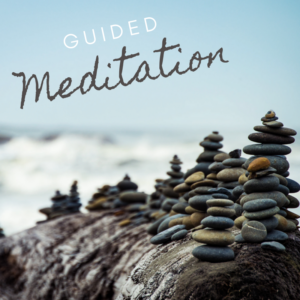 I love my job. When Jane (not her real name) came into the office today, she seemed a little agitated. As she brought me up to speed on what had happened since our last visit, she told the story of overwhelm: too much to do, not enough time to get it all done. She said she felt literally and figuratively out of balance and that was only part of the problem. She began to cry as she said that she was tired of living with fear. It was clear that she needed healing.
I love my job. When Jane (not her real name) came into the office today, she seemed a little agitated. As she brought me up to speed on what had happened since our last visit, she told the story of overwhelm: too much to do, not enough time to get it all done. She said she felt literally and figuratively out of balance and that was only part of the problem. She began to cry as she said that she was tired of living with fear. It was clear that she needed healing.
I love using guided meditation with clients. We are able to make a lot of progress in a little bit of time. Today, I guided Jane into a meditative state which set the stage for her conscious connection with her Higher Self. We cleared her mental, emotional, and physical bodies. Then, one by one, we dissolved blocks: trauma, fear, sadness, and vulnerability melted away.
When my clients are meditating with me, I can feel their energy move and often see color changes in the energy around their bodies. Love that. I would never have believed this was possible if it hadn’t happened—but it happens. Today, as these blocks were being released, I could feel the energy spinning in a slightly dizzying way. I could also actually see Jane’s energy getting lighter and brighter as we went along.
After our big clearing exercise, we connected Jane to her inner yin and yang qualities, or inner male and female selves (we all have both). This is one of the things I love best to do with my clients because it is so helpful. Today, as soon as we connected to Jane’s male self, I felt an incredible heat as the energy flowed. Her male self wanted more organization; her female self wanted more self-care and meditation. She made adjustments and agreements and visualized herself getting these things in place.
I love seeing my clients getting happier. By the end of our session, Jane’s entire demeanor had changed. Her color was brighter, she was more calm and relaxed, and she had a plan. As we reflected on the work, Jane told me that she also had felt heaviness being cleared away, and made a motion of her hands pushing out from her heart. She had come into the office stressed, tired, and “crooked” inside. She walked out empowered, relaxed, and energized, and in alignment.
I love my job.
PS. Every Monday I offer the best free guided meditation.
Change how memories feel using EFT
"I remember but I don't feel upset": How energy psychology facilitates memory reconsolidation
One of the best things about being an energy psychology practitioner is seeing that look of wonder in our clients' eyes when their traumatic memories are no longer traumatic. Tapping lets us change how memories feel.
"I remember it, but I don't feel upset about it," they say.
It's the kind of experience that makes this profession so rewarding.
I remember one instance in particular. A client was working on a childhood trauma. He was in tears ― lots of them ― before we even started working. When I asked him to rate his distress on a scale of 0-10, he said it was 100. He looked as if he were telling the truth.
We began working. If you practice energy psychology, you know the drill: We tapped, and down the rating went: 10 to 6, 6 to 3, 3 to 0 or 1. At the end of the hour, and the end of the story, we arrived at a wide-eyed, "How-did-this-happen, I-remember-but-I-don't-feel-upset, it's-a-ZERO!!"
Months later, I asked my client how he felt about the issue. He looked at me with surprise. "You know, I don't think about it. I remember it happened but it doesn't bother me."
Memory reconsolidation
How did this happen? Why didn't the trauma response come back? A part of the answer, at least, has to do with memory reconsolidation.
Neuroscientists used to think that once something was encoded into long –term memory, it was there for good. The emotions associated with a memory were permanent. Or so it seemed.
In the late 1990's, researchers began studying memory reconsolidation. It turns out, thank goodness, that memories are changeable. When memories are activated ―when we remember― the memory becomes labile. In that state, it can be changed, or reconsolidated. When a memory is reconsolidated, the uncomfortable emotions associated with it can be erased.
Researchers and theoreticians disagree about the exact requirements for memory reconsolidation to occur. However, they have identified three key ingredients:
1. Vividly remember
2. Change the internal physiology or juxtapose a contradictory experience
3. Repeat
Extinction vs. Reconsolidation
Most anxiety therapies offer, at best, "extinction." Yet extinction is really a misnomer. Like the salivation response of Pavlov's dogs after "extinction", so too with extinction-oriented therapy: anxiety-provoking memories, and their flood of feelings, can come back unbidden at any time.
Memory reconsolidation is something different: an elimination of the anxiety associated with a previously disturbing memory. As my client's experience illustrates, a traumatic memory can be reconsolidated so that it no longer triggers a trauma response.
Memory reconsolidation and energy psychology
In his 2015 article, David Feinstein explained energy psychology tapping in terms of memory reconsolidation. His article is worth a read; the link is here.
Meridian tapping changes our internal physiology. Studies show that tapping on meridian points changes body chemistry and brain activity:
• A recent study using functional magnetic resonance imaging (fMRI) showed deactivation in limbic regions following tapping.
• A 2009 study, using electroencephalogram (EEG), demonstrated healthy changes in brainwave patterns after trauma treatment with energy psychology.
• A 2012 study showed energy psychology reduces levels of salivary cortisol.
When we do energy psychology tapping, we ask our clients to activate the memory. While they do that, they are tapping on meridian points. Our clients are simultaneously activating a troubling memory and calming their internal physiology.
Energy psychology is a good way to facilitate memory reconsolidation; memory reconsolidation is a good model to explain how energy psychology works. No matter how you look at it, energy psychology helps our clients heal old wounds and feel better about themselves.
Biography, Biology, and Destiny: How Energy Psychology Can Break The Chain
(Originally published on ACEPblog.org)
Diabetes. Depression. Heart disease. Asthma. Addiction. Cancer. What common denominator increases the likelihood of developing any of these conditions?
Adverse childhood experiences, or ACEs.
According to the CDC, ACEs are associated with an increased risk for mental and physical health problems across the lifespan. Childhood trauma (the biography) seems to affect our brains, nervous systems, and biochemistry (biology), which in turn increases the risk of psychological issues and serious illness (destiny).
ACES are a HUGE public health issue. Since 1998, when Vincent Felitti and his colleagues published the seminal ACE study that revealed the health risks associated with childhood trauma, much public health focus has been on prevention. Prevention is a great idea. But can we do anything for those who have already had ACEs?
With its track record of helping people recover from trauma, perhaps energy psychology has a key role to play in helping people heal from the effects of childhood trauma.
ACEs and Health
The problem of ACEs has gained widespread attention in recent years. The CDC estimates that if we prevented ACEs, we could eliminate 21 million cases of depression, nearly two million cases of heart disease, and 2.5 million cases of overweight/obesity. We would save millions of dollars in healthcare costs every year.
Sixty-one percent of American adults have experienced at least one adverse childhood experience. Sadly, 16% of us have experienced four or more ACEs. This is important because four is the critical number of ACEs that takes a serious toll on wellbeing and health.
For example, an ACE score of four or more…
- Is associated with a 390% increase in the likelihood of developing chronic obstructive pulmonary disease (COPD).
- Is associated with a 460% increase in the likelihood of developing depression.
- Increases suicide risk by 1,220%.
- An ACE Score of six or more is associated with a decreased life span of 20 years.
ACEs and Biography
There are three main categories of ACEs, and each category contains several types.
Abuse: Physical, Emotional, Sexual
Neglect: Physical, Emotional
Household Challenges: Intimate Partner Violence, Mental Illness, Divorce, Substance Abuse, Incarcerated Relative
Children of different races have different incident rates of adverse childhood experiences. According to the Child Trends brief of the 2016 National Survey of Children’s Health, the highest incidence of ACEs is among Black non-Hispanic Americans (61%) followed by Hispanic Americans (51%); 40% of White non-Hispanic Americans experience ACEs, and 23% of Asian Americans.
Biography Becomes Biology
Chronic exposure to stress during childhood can change our physiology, including changing cortisol levels, immune function, and inflammation. The effects on the developing brain can be serious and can include changes to the amygdala (associated with visceral emotion), hippocampus (associated with memory), and prefrontal cortex (associated with higher reasoning and impulse control).
Adverse childhood experiences can also affect social functioning. Children growing up in chaotic environments tend to have difficulty forming and maintaining friendships and may act out with aggression and bullying. Early childhood issues can affect career, relationships and family life, and may have a negative impact on financial wellbeing. People with high ACE scores tend to have problems with emotion regulation and to experience themselves as unworthy, helpless, or incompetent.
Moreover, ACEs are linked with unhealthy and risky behaviors. Attempting to self-regulate, people with high ACE scores tend to smoke, drink excessively and abuse other drugs, engage in risky sexual behaviors, overeat and be sedentary.
Following these pathways, biology can become destiny. The literature on ACEs tells us that ACEs “permanently affect” our physical, emotional, and mental health.
But what if the damage is not permanent?
Biology Does Not Have to Become Destiny
While much public health focus has been on preventing ACEs ― and clearly we should ― the question of healing ACEs also needs attention. Energy psychology, in particular Thought Field Therapy (TFT) and Emotional Freedom Techniques (EFT), has a long history of helping people heal trauma.
For example, a 2017 meta-analysis found that EFT is exceptionally effective in treating PTSD. Widely used in social science, meta-analyses are statistical studies that combine the results of many individual studies to determine the overall effectiveness of treatment. This meta-analysis included seven controlled trials and found that EFT had a very large positive effect on participants across all studies of 2.96 as measured by a weighted Cohen’s d. An effect size of 0.8 is considered large. This shows that EFT is very effective at treating PTSD.
Furthermore, a 2006 study using TFT to treat PTSD among teenagers who had survived the Rwandan genocide found that a single session of TFT provided relief. The 50 adolescents treated in the study had been suffering with PTSD symptoms including flashbacks, nightmares, jumpiness, aggression, and difficulty concentrating. The symptoms reduced dramatically, to subclinical levels, after a single session of 20-60 minutes of TFT, and the gains held at one-year follow-up.
These examples remind us how powerful energy psychology can be. It is possible that a widespread use of energy psychology methods could mitigate the effects of childhood adversity and help heal the effects of ACEs. The research, as well as the clinical experience of many professionals, show great promise in this direction.
That is something to be hopeful about indeed.





